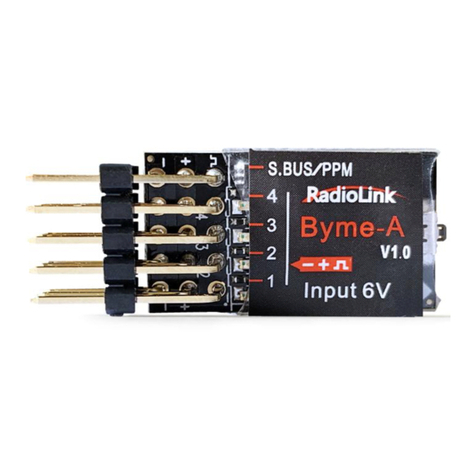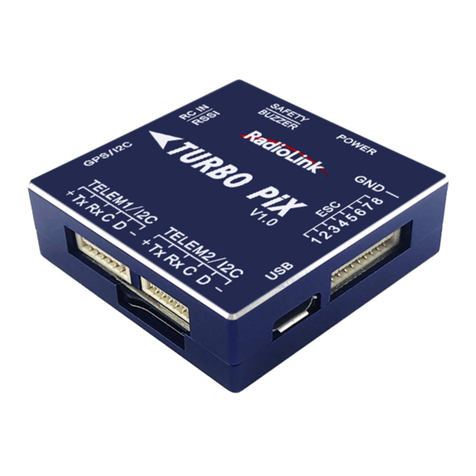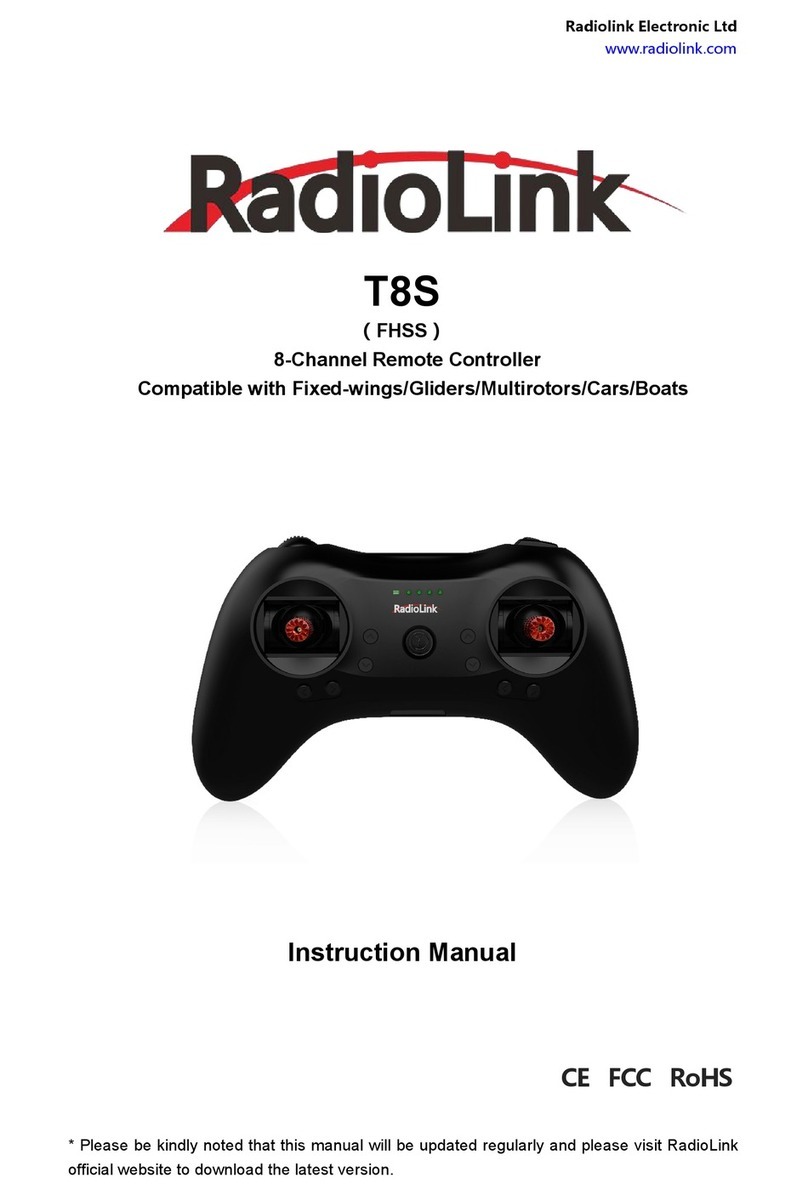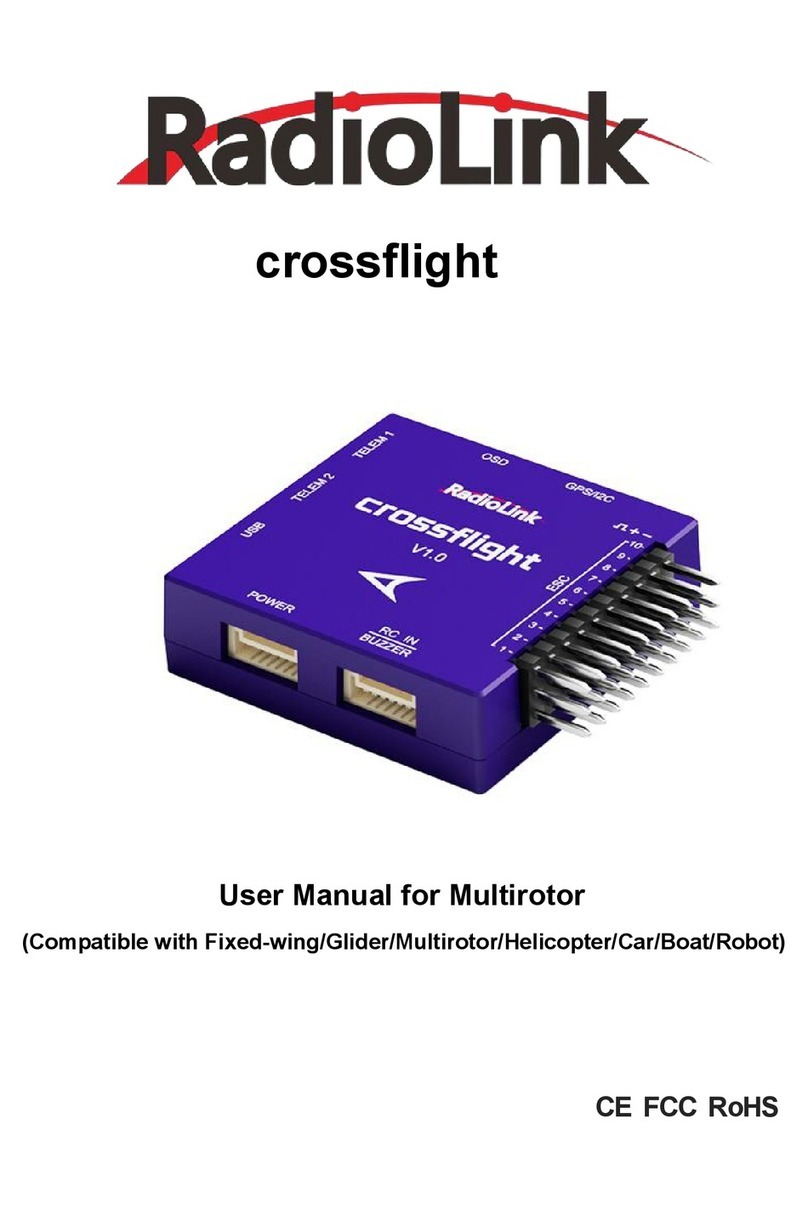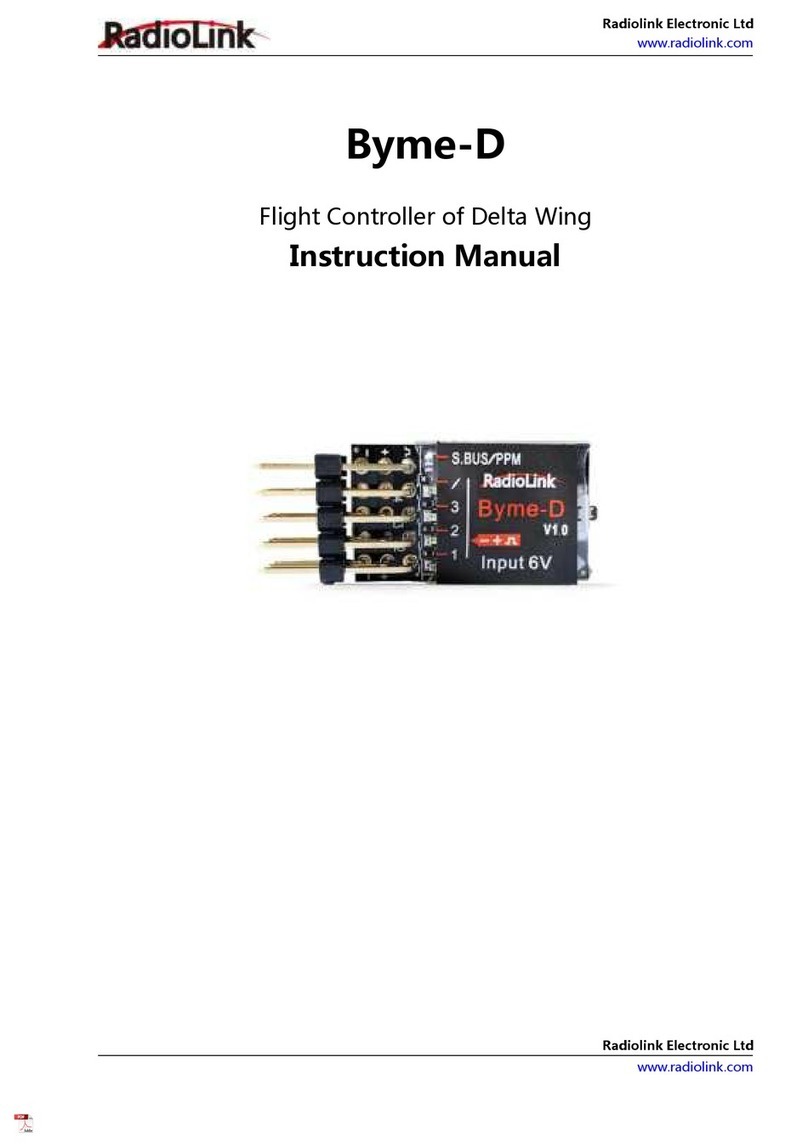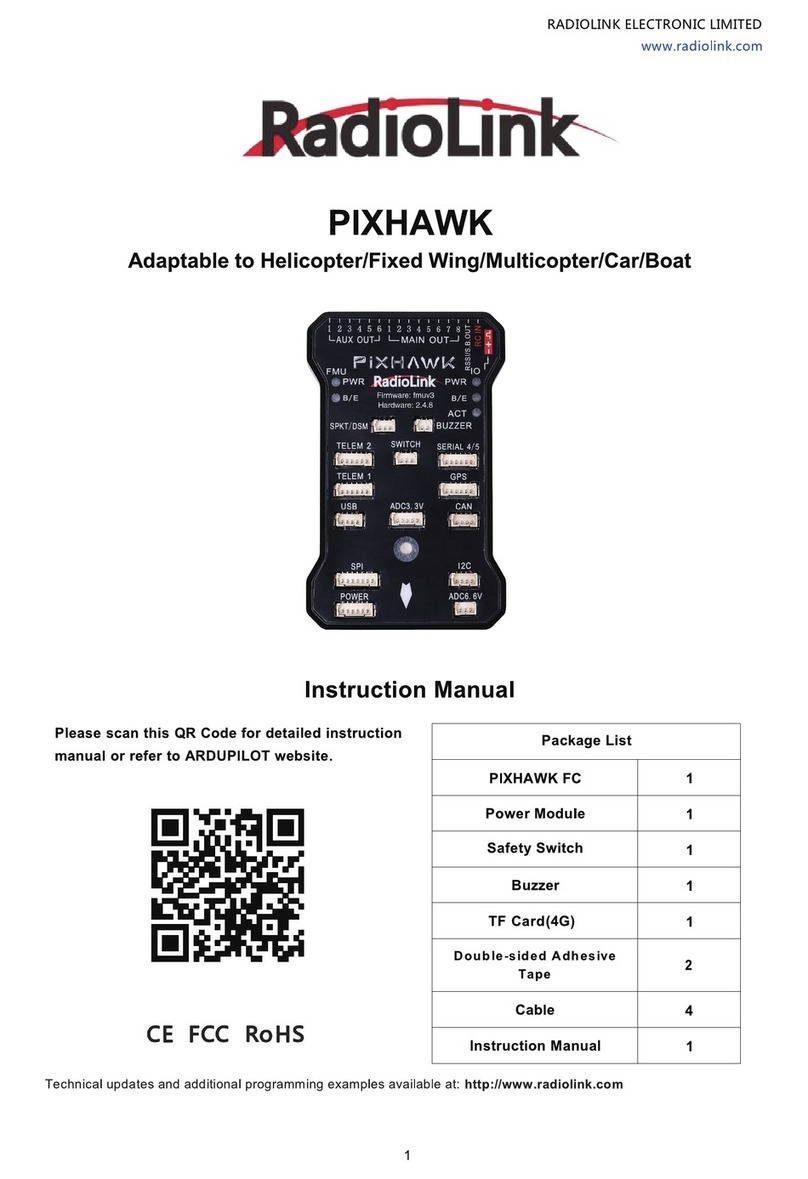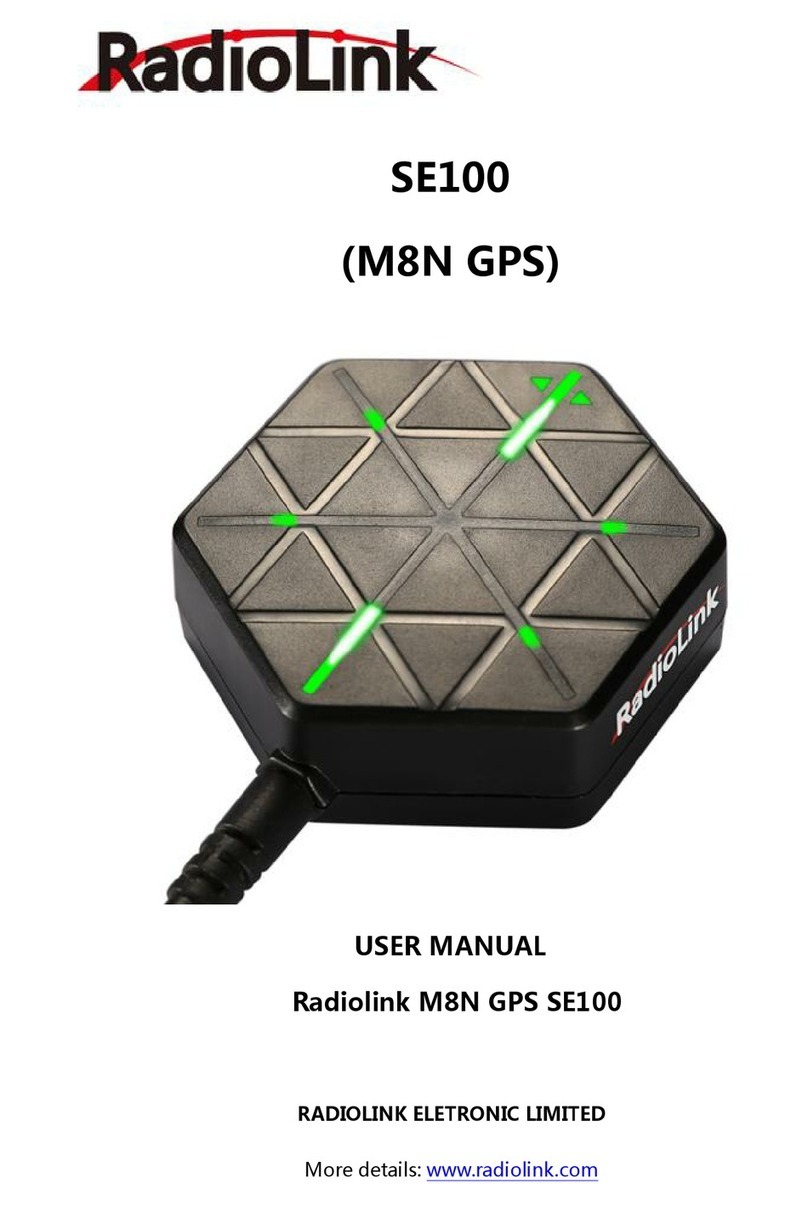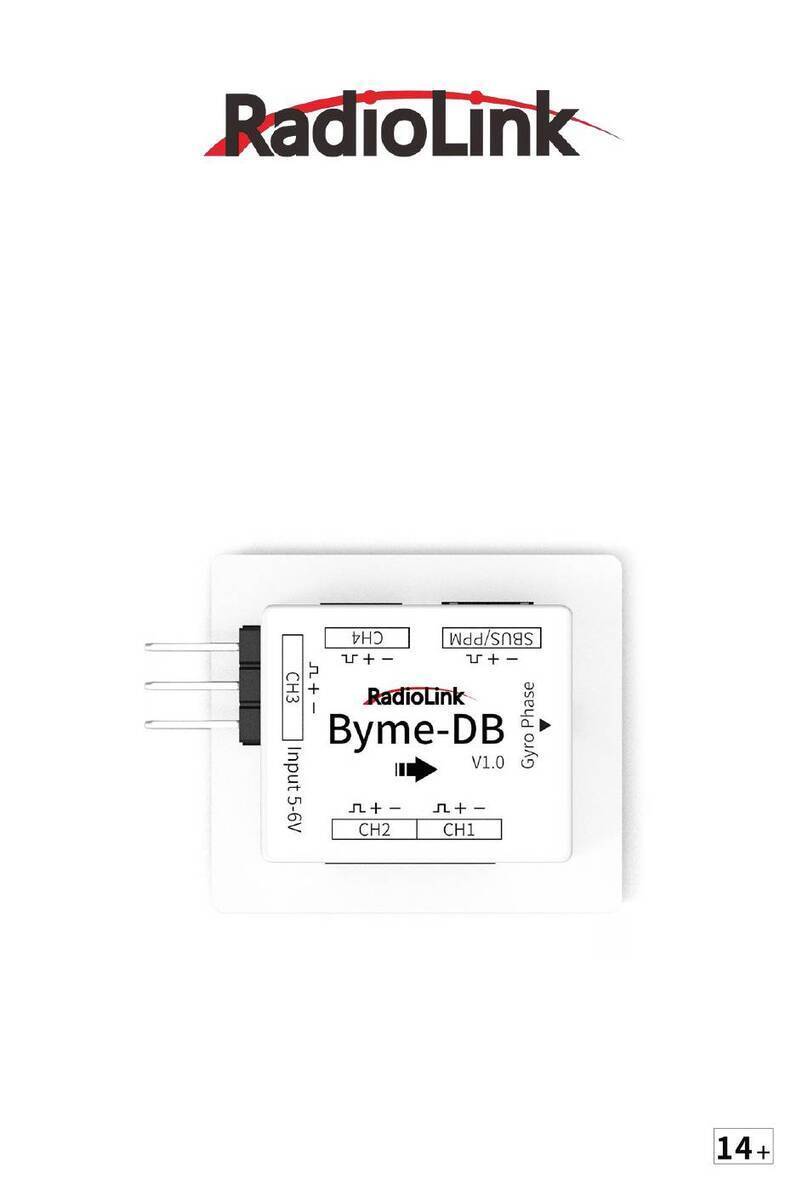
RadioLink Electronic Ltd
www.radiolink.com
Thanks for purchasing Radiolink flight controller Byme-A.
To fully enjoy the benefits of this product and ensure safety, please read the introduction
carefully and set up the device as described below:
If any problems found during the operation process, please kindly refer to the manual first. Then
pilots could contact our distributors to find solution or follow our Facebook homepage
https://www.facebook.com/radiolinkofficial/ to search related key words. Also, pilots can send
questions to after_service@radiolink.com.cn and we will answer your question at the earliest. Due
to unforeseen changes in production procedures, the information contained in this manual is subject
to change without notice.
For more information, please check our website http://www.radiolink.com
SAFETY PRECAUTIONS
Never operate model during adverse weather conditions. Poor visibility can cause disorientation
and loss of control of pilots’ model.
Never use this product in a crowd and illegal area.
Always ensure the trim levers at 0 and battery properly charged before connecting the receiver.
Always check all servos and their connections prior to each run.
Always be sure about turning off the receiver before the transmitter.
To ensure the best radio communication, please enjoy the flight/driving at the space without
interference such as high voltage cable, communication base station or launching tower.
WARNING
This product is not a toy and is NOT suitable for children under the age of 18. Adults should keep the
product out of the reach of children and exercise caution when operating this product in the
presence of children.
Water or moisture may enter the transmitter inside through gaps in the antenna or joystick and
cause model instability, even out of control. If running in the wet weather (such as game) is
inevitable, always use plastic bags or waterproof cloth to cover the transmitter.
